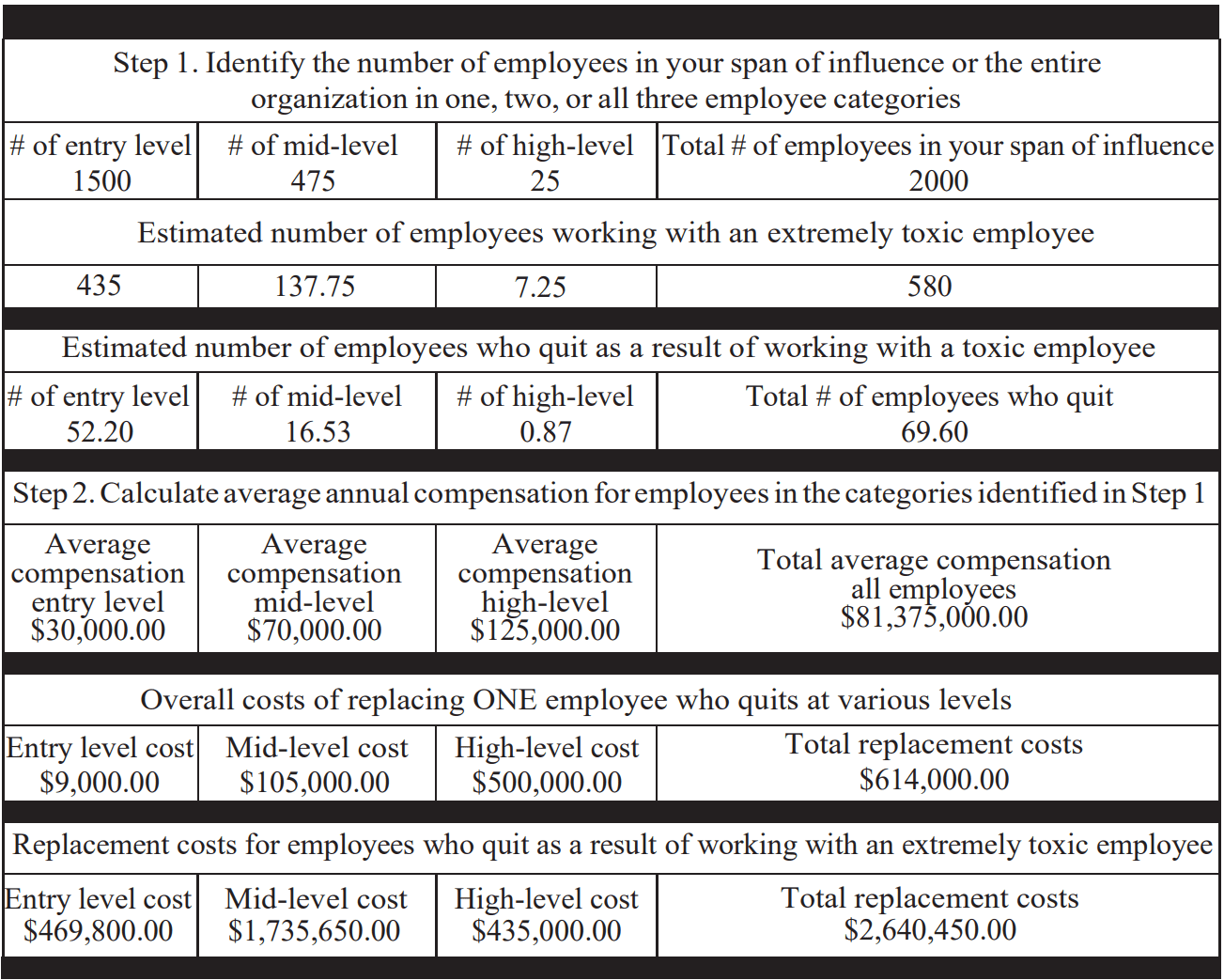 About 20 years ago, I quit a great job because of a toxic person.
About 20 years ago, I quit a great job because of a toxic person.
When I handed my boss my resignation, he attempted to talk me out of my decision. He could not understand why I was resigning since I had outstanding performance reviews. Because I feared how this toxic individual could retaliate by spreading my name as mud in my new organization, I lied. I gave my boss a fictitious reason I was resigning. By the way, I was not the only who quit because of this toxic person; others left as well. Because she was a “toxic star,” her behavior was not on my boss’s radar screen until it was too late. When my boss finally realized what a path of devastation she left in her wake, he had already lost really great employees and the organization took a major financial hit.
Many healthcare leaders, like my former boss, are not aware of the financial cost that even toxic stars can cause. They justify someone’s toxic behavior because the person is so good at what they do; especially in healthcare when the stakes are high, intimidating behavior erodes patient safety and clinical outcomes.
A neurologist got upset by the nurse calling her at home about a patient; the neurologist refused to come in. She told the nurse it was not “her job to think”, just to “follow orders”. Treatment was delayed and the patient extended her stroke.
A nurse called a physician multiple times regarding a deteriorating patient’s condition. The physician got upset with the RN calling and ignored continued pages. The patient eventually had to be intubate and transferred to the ICU where he later died.
Study after study – example after example – all demonstrating the negative impact disruptive behaviors have on individuals, organizations, and patients. Why then, aren’t executive leaders taking action?
In my research study with over 400 individuals regarding toxic workplace behaviors, a whopping 92% of individuals rated the severity of toxic behaviors in their organization between 7 and 10 on a 10-point scale. This “pain scale” demonstrates the personal angst often felt. But personal angst and poor patient outcomes don’t always lead to a call for action.
Perhaps money will.
What do toxic stars cost?
First, in healthcare, the primary concern is patient safety. We know from hundreds of studies that patient safety is compromised when toxic, intimidating behaviors go unaddressed.
Some professionals are reluctant to confront a toxic star when they disagree with a medication order or challenge a colleague who isn’t following best practice. In several large-scale studies, 60% to 80% of healthcare professionals said disruptive behaviors compromised patient safety.
Second, we know that in healthcare, 31% of nurses reported that they knew someone who quit because of a toxic person. What does this mean specifically regarding financial costs? We know from many studies in human resource metrics that the costs of recruiting, onboarding, and training new employees can add significant costs depending on the professional level:
- 50% for entry-level individuals;
- 150% for mid-level professionals;
- 300% to 400% for highly specialized or high-level individuals.
These statistics are a wake-up call that we can no longer let toxic people get away with bad behavior. While there are many ways and strategies to convince executive leaders that they need to address toxic individuals, few involve getting clear on the financial impact of keeping a toxic star. Until now!
At the Healthy Workforce Institute, we offer healthcare leaders a method of quantifying the costs of how not dealing effectively with a toxic employee costs money. The Toxic Cost Worksheet© creates almost immediate insight into this cost It’s a call to put a stake in the ground to do something immediately about this.
Here you’ll find a blank version of the Toxic Cost Worksheet©.

To complete the Toxic Cost Worksheet©, you need two statistics:
- The number of employees in your organization (or department)
- The average compensation according to three levels—entry-level, mid-level, and high-level.
Associated with these statistics are two steps:
Step 1. Identify the number of employees in each of three groups: entry-level, mid-level, and high-level (or highly specialized). When you insert these into the three respective cells and then click on the final cell to the right, the worksheet populates the remainder of the cells associated with a number of employees.
Step 2. Identify the average compensation of individuals in each of these same employee groups. Likewise, when you insert these statistics into the three respective cells and then click on the final cell to the right, the worksheet again populates the remainder of the cells associated with average compensation.
In the example below, a total of 2,000 employees were employed in this healthcare organization; 69 employees will quit as a result of working with a toxic person! In this case example, with total payroll costs of approximately $81.4 million, the replacement costs for these 69 employees who quit are approximately $2.6 million—or roughly 3.3 percent of total payroll costs. With some organizations, this figure has escalated to almost 6 percent!

Some leaders have asked why this is a strategy? It appears more an assessment method. Great question!
While it certainly is an assessment method, I have found that it is so much more than this. These statistics create awareness, which inspires action. When engaging executive leaders in this activity, there is often an “aha” moment in which everyone understands that something must be done…now!
Armed with the cost of keeping a toxic employee, healthcare leaders can no longer “turn the other cheek.” It is a call to action that we need to do something about this now!
Think about it this way. If your organization found a way to save anywhere from approximately 3% to 6% of total compensation costs, how might your organization’s leaders respond? I have found that most of my clients jump at this opportunity to save this kind of money, which can be used for so many more worthwhile causes within the healthcare organization.
Completing the Toxic Cost Worksheet© as a team can help catalyze action.
Once completed, teams “get it” and are more solidified in wanting to do something about toxic behaviors.
Click here to get access to the Toxic Cost Worksheet©. For more details, I have an entire chapter devoted to this method in my latest book, Why I Don’t Work Here Anymore: A Leader’s Guide to Offset the Financial and Emotional Costs of Toxic Employees.
You can then experience this for yourself and/or your team. The insights that are likely to ensue will be a catalyst for action.
Isn’t it time we stop accepting bad behavior as the norm – star or not!
We are anxious to hear your feedback on this topic and the Toxic Cost Worksheet©. Leave us a comment below and share with others using the social media buttons above.












